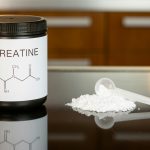
If you’re a personal trainer working with clients on GLP-1s like Ozempic, Wegovy, or Mounjaro, it’s essential you understand one unassailable truth: you’re not just helping them lose weight, you’re fighting to help them keep muscle. And in this emerging health, wellness, and personal training landscape, muscle preservation isn’t optional—it’s the whole game!
As someone who’s had the good fortune of coaching elite athletes and now consults with executives and everyday clients alike, I’ve seen the shift firsthand in the last year, especially. Put simply, listen to prominent voices and influencers like Dr. Mike Israetel, Dr. Peter Atilla, and Dr. Mark Hyman, and it’s easy to see that GLP-1s are everywhere. Just the other day, I even saw foods labeled as “GLP-friendly.” As a result, it’s important to understand that as the drugs continue to evolve, yes, they’re powerful tools, but they can also become silent saboteurs when used without a muscle-centric lens.
As a result, here’s what every trainer needs to know, and why the smartest professionals in the room are already adapting.
The Lean Mass Dilemma
Refer back to my two previous posts, and you will see beyond a shadow of a doubt that GLP-1s work. Period. However, the weight they help people lose isn’t always the weight they should lose. Behind those double-digit scale drops, a significant portion often comes from lean muscle tissue, not just fat. And if your clients aren’t lifting, eating enough bioavailable dietary protein, and getting strong, they’re setting themselves up for long-term metabolic decline, not success.
As I’ve also explained in my other two seven-part series on Dr. Gabrielle Lyon’s Muscle-Centric Medicine, which is a cornerstone of today’s medical, health, and human performance landscape, skeletal muscle isn’t just about aesthetics. It’s about blood sugar regulation, injury prevention, and hormonal balance. Therefore, losing it accelerates aging, decreases resilience, and makes clients more fragile than before they started.
As a result, if you’re a trainer who’s not talking about this yet, start if you are and double down.
Strength Is the Real Transformation
When clients lose 20 pounds but feel weak, sluggish, or unbalanced, that’s not transformation—that’s a trade-off. And in my humble opinion, not a good one.
In today’s GLP-1 landscape, here’s the simple truth: muscle mass is the key factor that determines whether GLP-1 weight loss is sustainable or self-sabotaging. The clients who succeed are those with the most knowledgeable personal trainers who are willing to educate themselves on the drugs and their physiological and psychological effects, and who train as if these things matter, because they do.
Thinking of some of the major compound lifts most associated with resistance training, they squat, they press, they hinge, and they also fuel and know how to recover. They track more than their weight; they track strength, mobility, and metabolic energy.
As a result, your job as a trainer is to champion that process by making muscle the metric that matters the most.
Why This Is a Golden Opportunity
Let’s flip the script: Despite the confusion that permeates this landscape, the rise of GLP-1s is not a threat to personal training or people seeking weight loss solutions. Instead, it presents a massive opportunity.
To illustrate, in my experience, more often than not, clients on these medications are already motivated. They’re finally seeing progress. But they’re also vulnerable. They’re unsure what comes next. Whether they realize it or not, they’re at risk of sarcopenia, fatigue, or, in my case, working with busy executives, burnout. And they’re looking for experts like you who can guide them through the next phase.
As a result, if you can position yourself as a muscle-preserving, health-optimizing coach who understands GLP-1s, you’re no longer a “nice to have.” Instead, you become an essential, indispensable, irreplaceable part of your client’s “success team.” Also, with prominent organizations like the American College of Sports Medicine (ACSM) paying more attention and lip-service to sarcopenia and sarcopenic obesity plus the fact that more people than ever in recent history will be of retirement age, the need for muscle-centric, protein forward nutrition and training services has never been in greater demand.
To this end, the best trainers are already rebranding: they’re not weight loss coaches—they’re strength and vitality specialists.
Muscle Is the Future of Wellness
For the past several decades, the fitness industry has primarily focused on weight loss. However, we now understand that weight alone is not a true indicator of health. Instead, it’s about lean mass, functional ability, and energy levels.
The evidence is clear, and a transformative shift is underway. Personal trainers who recognize this—who prioritize muscle development over mere aesthetics—will shape the future of health coaching in the coming decade.
It’s time to change the narrative. Educate your clients. Encourage them to step away from the scale and embrace strength training.
Muscle is no longer optional; it’s essential.






